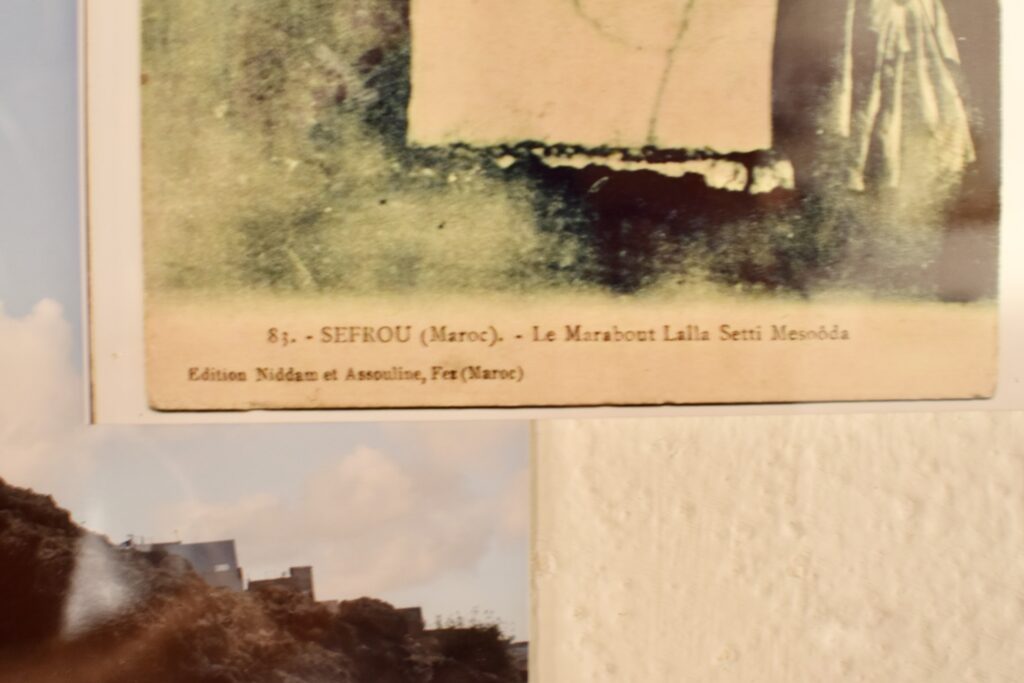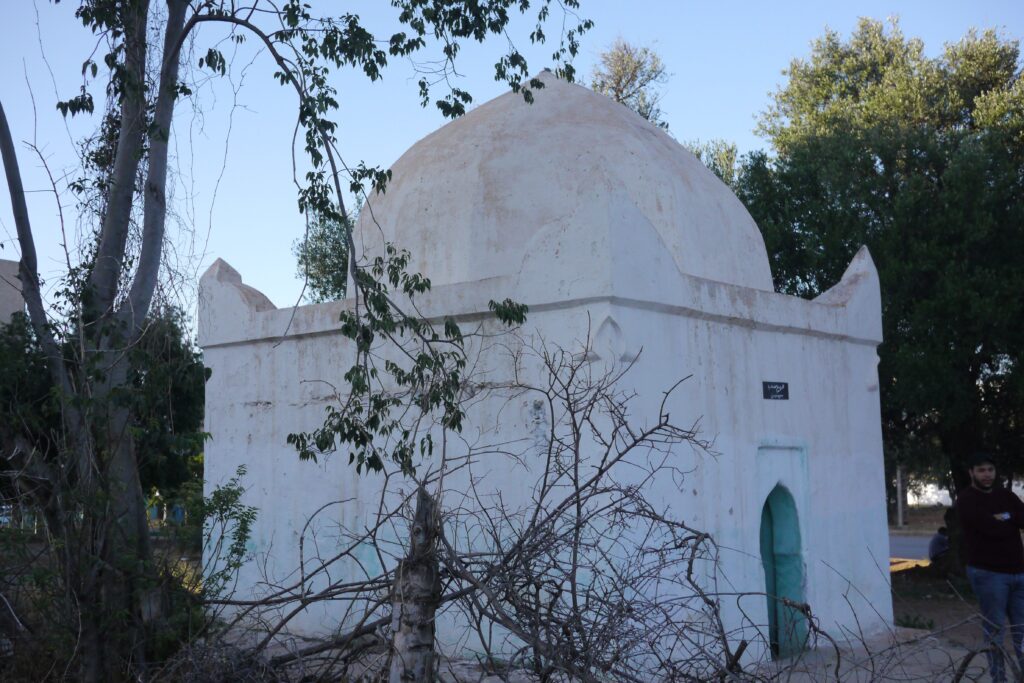
Museum Mislabelling Mystery!
As a historical market town on the crossroads of an ancient trading route, Sefrou is famous for its saints. Travellers were blessed by the saints of Sefrou before departing on their travels. In a surprising recent discovery, we found out that a photograph in our museum has been honouring the wrong one!

In the centre of the photograph is a saint’s tomb/sanctuary. In the lower right of the photograph, an unknown figure is dressed in cloak and headgear. The figure, most probably male, appears to be leaving the tomb. The photograph is labelled ‘Le Marabout Lalla Setti Mesouda’ (the sanctuary of Lalla Setti Mesouda).
Niddam & Assouline were Jewish publishers based in Fez. The date of the photograph is not known for certain. Another photograph, number 76 in the series of which this was almost certainly number 81, has been dated by the mahJ (musée d’art et d’histoire du Judaïsme) as being taken in 1913. It is therefore likely that this photograph was also taken, on the same photographer’s trip to Sefrou, in 1913.

Lalla Setti Mesouda, whose sanctuary this photograph supposedly depicts, was a female Jewish healer. The neighbourhood where this sanctuary stood is named after her.
Here’s where the story thickens: we have learnt from people in and around Sefrou’s medina that this could not have been the tomb and sanctuary of Lalla Setti Mesouda. People who remember visiting her sanctuary, now destroyed, tell us that her tomb did not have a roof, while the tomb depicted in the photograph does.
So, what could be the story of this mislabelled tomb? Perhaps a photographer arriving in Sefrou from Fez was given some wrong information. Perhaps it was the publisher’s mistake.
What tomb is it in the photograph? It is most likely to be the tomb of Sidi Boumedin, whose roof resembles the one in the photograph. The doors facing us in both photographs are however different. On the tomb of Sidi Boumedin, the door has a slightly pointed arch, whereas the arch of the door in the other photograph is more rounded. Could it be that the door was restored differently? Or could it be that the tomb in the original photograph is a different one entirely, lost to reconstruction works over the last century?

Where does this leave us? What are we to do with the misinformed label? Now our discussion arrives at current archival techniques and decolonial and participatory museum practice.
We could cut off the label with scissors and leave the photograph of the tomb as it is. There would no longer be an erroneous label, but there would also be no evidence there had ever been an erroneous label. We would be erasing an important part of the photograph’s, and Sefrou’s, history. This would be of particular concern because the mislabelling of this photograph may be taken as an example of the inaccuracies (in this case, granted, likely not deliberate) of the historical record under colonial regimes.
Alternatively, we could attach a new label over the old one, replacing it with the most likely truth – that it is the tomb of Sidi Boumedin. There would no longer be any visible misinformation, but it would not be half-clear that we had intervened because the old label was inaccurate. We may have replaced the label because of damage, or because the old label was difficult to read.
A third option would be to attach a label separately which indicated that the original label was factually inaccurate. On this label we could display the link to this blog post so that someone could read the full story if it interested them. We could even display a shorter version of this article in print.
What do you think we should do? Leave a comment below or contact us on Facebook or Instagram with your suggestions.

One thought on “Museum Mislabelling Mystery!”
Definitely the third option. The mislabelling is part of the original photo’s story and history, it is also intriguing. Also mysteries like this are great additions to museums…they engage the audience and add a human touch. You could get visitors to comment, add their knowledge of the Jewish woman and the original tomb. It really starts a conversation and especially engages older people who may still have knowledge of the now destroyed tomb…why, how, when? Mysteries like this are exciting and tease out information, questions and discussion. I would rearrange the display so this photo has more room and addd a print out of the blog…or a new label entirely with all the information you have found and photo of the existing tomb which it certainly looks like. The tomb door design is another discussion…Jewish compared with Islamic design. Whatever you do, cutting off the label or covering is definitely not appropriate. Love this whole discovery.